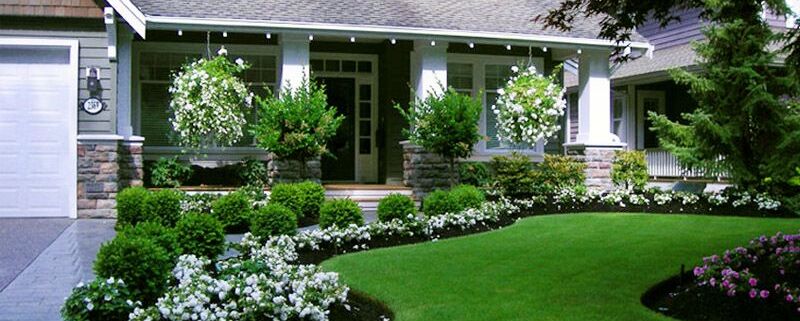How Landscaping and Green Spaces Improve Air Quality
How Landscaping and Green Spaces Improve Air Quality
Air quality isn’t just shaped by factories and vehicles — it’s also deeply influenced by the landscapes around us. Thoughtfully designed green spaces filled with grass, trees, shrubs, and other vegetation play a powerful role in cleaning the air we breathe. From backyards to public parks, these living systems act as natural air filters, absorbing pollutants, trapping particulates, and producing oxygen.
As awareness of the Air Quality Index (AQI) grows, so too does the importance of understanding how our own landscapes can positively affect it.
Four Ways How Plants Improve Air Quality
- Absorbing Air Pollutants
Trees, shrubs, and turfgrass absorb harmful pollutants such as:
- Nitrogen dioxide (NO₂)
- Sulfur dioxide (SO₂)
- Carbon monoxide (CO)
- Ground-level ozone (O₃)
Leaves act as filters, pulling pollutants from the air and storing them or converting them into less harmful forms. Larger-leafed trees, in particular, are highly effective at pollutant capture.
- Capturing Particulate Matter (PM)
Particulate matter — fine dust, soot, smoke, and other airborne particles — can be trapped by the surfaces of leaves and blades of grass. Rain then washes these particles to the ground, where they’re absorbed by soil instead of entering our lungs. - Producing Oxygen
Through photosynthesis, plants absorb carbon dioxide and release oxygen. A single mature tree can produce enough oxygen to support two people annually. Multiply that by an entire neighborhood canopy, and the air-cleaning effect becomes significant. - Cooling the Environment
Green spaces help reduce urban temperatures through shade and evapotranspiration. Cooler temperatures slow the formation of ground-level ozone, one of the most harmful components of smog. This cooling effect also reduces the need for air conditioning — meaning fewer emissions from power plants.
Green Space Matters in Cities
Urban areas often suffer from the heat island effect, where pavement and buildings absorb and re-radiate heat. The result? Poorer air quality and greater health risks.
Adding trees and green infrastructure to city environments can:
- Reduce surrounding air temperatures by up to 10°F
- Decrease ozone formation
- Lower airborne pollution concentrations
- Improve respiratory health for residents
The Health Benefits Add Up
Cleaner air leads to measurable health benefits:
- Fewer asthma attacks
- Improved lung function
- Lower risk of cardiovascular disease
- Better mental health and stress reduction
Children, seniors, and individuals with respiratory conditions benefit the most — but cleaner air helps everyone thrive.
What You Can Do
Improving air quality starts at home and in your community. You can make a difference by:
-
- Planting trees, shrubs, and low-emission ground covers
- Maintaining healthy turfgrass that captures pollutants
- Supporting green infrastructure projects in your neighborhood
- Reducing use of gas-powered landscaping equipment
- Advocating for urban greening in public spaces
Clean Air Starts from the Ground Up
Green spaces are more than beautiful — they’re vital. By investing in healthy lawns, trees, and landscapes, we’re not just creating more livable communities — we’re taking action to protect public health and the environment.
Discover the Power of Green Spaces
Green spaces do more than just beautify our neighborhoods – they help clean the air we breathe, cool our cities, reduce carbon levels, and promote healthier, more connected communities. Lawns, trees, and shrubs may seem simple, but together, they form powerful natural systems that benefit both people and the planet.
To help you understand the impact of your own green space, Project EverGreen invites you to explore the Clean Air Calculator™ – a free, web-based tool that measures the environmental benefits of green spaces on your property.
Whether you’re a homeowner, landscape professional, golf course superintendent, sports field or park manager, or property owner, this innovative tool makes it easy to see the real-world impact of the green spaces you care for.
See how your green space makes a difference. Try the Clean Air Calculator today:
https://projectevergreen.org/clean-air-calculator/





